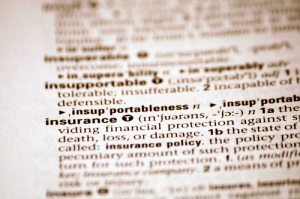Have you ever considered a “Safe Harbor Provision” for your Owner-Architect or Owner-Engineer contract? Maybe it is time that you do.
As you are (probably too well) aware, on every construction project there are changes. Some of these are due to the owner’s change of heart, value engineering concerns, contractor failures, and material substitutions. Some may be because of a design error, omission, or drawing conflict. It happens.

A “Safe Harbor Provision” is a provision that establishes an acceptable percentage of increased construction costs (that is, a percentage of the project’s contingency). The idea is that if the construction changes attributable to the designer is within this percentage, no claim will be made by the Owner for design defects.
An example provision is provided in the EJCDC documents (Exhibit I, Allocation of Risks, of Form E-500), which provides
Agreement Not to Claim for Cost of Certain Change Orders: Owner recognizes and expects that certain Change Orders may be required to be issued as the result in whole or part of imprecision, incompleteness, errors, omissions, ambiguities, or inconsistencies in
the Drawings, Specifications, and other design documentation furnished by Engineer or in the other professional services performed or furnished by Engineer under this Agreement (“Covered Change Orders”). Accordingly, Owner agrees not to sue or to make any claim directly or indirectly against Engineer on the basis of professional negligence, breach of contract, or otherwise with respect to the costs of approved Covered Change Orders unless the costs of such approved Covered Change Orders exceed __% of Construction Cost, and then only for an amount in excess of such percentage. Any responsibility of Engineer for the costs of Covered Change Orders in excess of such percentage will be determined on the basis of applicable contractual obligations and professional liability standards. For purposes of this paragraph, the cost of Covered Change Orders will not include any costs that Owner would have incurred if the Covered Change Order work had been included originally without any imprecision, incompleteness, error, omission, ambiguity, or inconsistency in the Contract Documents and without any other error or omission of Engineer related thereto. Nothing in this provision creates a presumption that, or changes the professional liability standard for determining if, Engineer is liable for the cost of Covered Change Orders in excess of the percentage of Construction Cost stated above or for any other Change Order. Wherever used in this paragraph, the term Engineer includes Engineer’s officers, directors, members, partners, agents, employees, and Consultants.
[NOTE TO — USER: The parties may wish to consider the additional limitation contained in the following sentence.]
Owner further agrees not to sue or to make any claim directly or indirectly against Engineer with respect to any Covered Change Order not in excess of such percentage stated above, and Owner agrees to hold Engineer harmless from and against any suit or claim made by the Contractor relating to any such Covered Change Order.
[Emphasis added to key provisions by me].
Essentially, the EJCDC safe harbor provision includes the following:
- Owner’s acknowledgement that change orders are standard operating procedure on construction projects
- Owner’s agreement not to sue or bring any claims against the engineer unless the costs of such exceed a negotiated percentage of the construction cost.
- Owner’s acknowledgment that not all change orders over the allocated percentage are the designer’s responsibility, as the aggregate amount does not include costs that the project owner would have incurred if the work covered by the change order had been included originally (the “betterment” to the owner).
- Owner’s acknowledgement that only the overages attributable to the design are compensable — notably, nothing changes the professional liability standard for determining if the engineer is liable in excess of the percentage.
Again, this is one of those “don’t try this at home” moments. A poorly written safe harbor provision could do more harm than good. It may be seen as establishing a warranty, and that would be an uninsurable loss. If not properly crafted, it may create the expectation that all overages fall on the designer. Proceed with caution!
When well-drafted, however, a safe harbor provision can provide you with some level of comfort for the inevitable discoveries that happen when the drawings hit the pavement.
Have you ever used a “safe harbor” provision in your Owner-Designer agreement? Did it work to your advantage, or did it create unreasonable expectations that change orders were capped at that amount? Share your experience below.
———————-
Photo: Boats in safe harbor, Roseau, Dominica via teletypeturtle/Creative Commons license.




